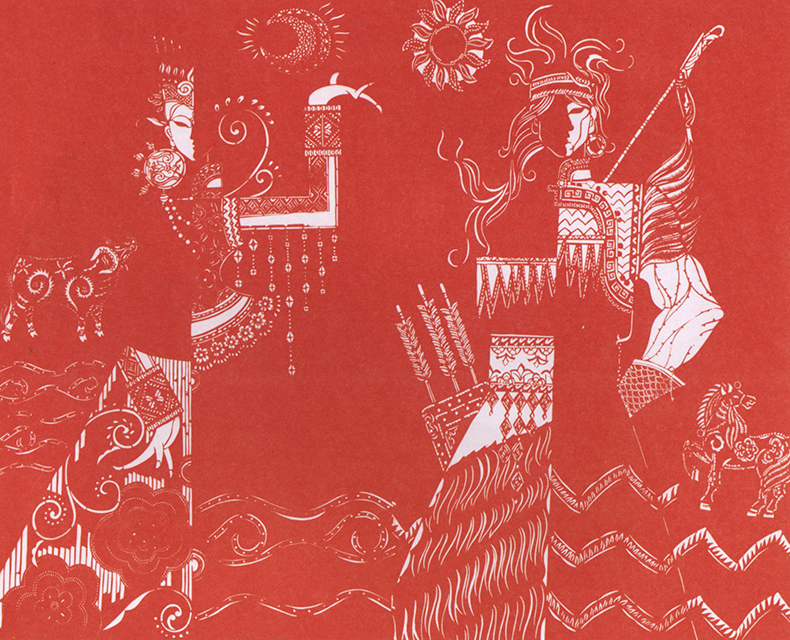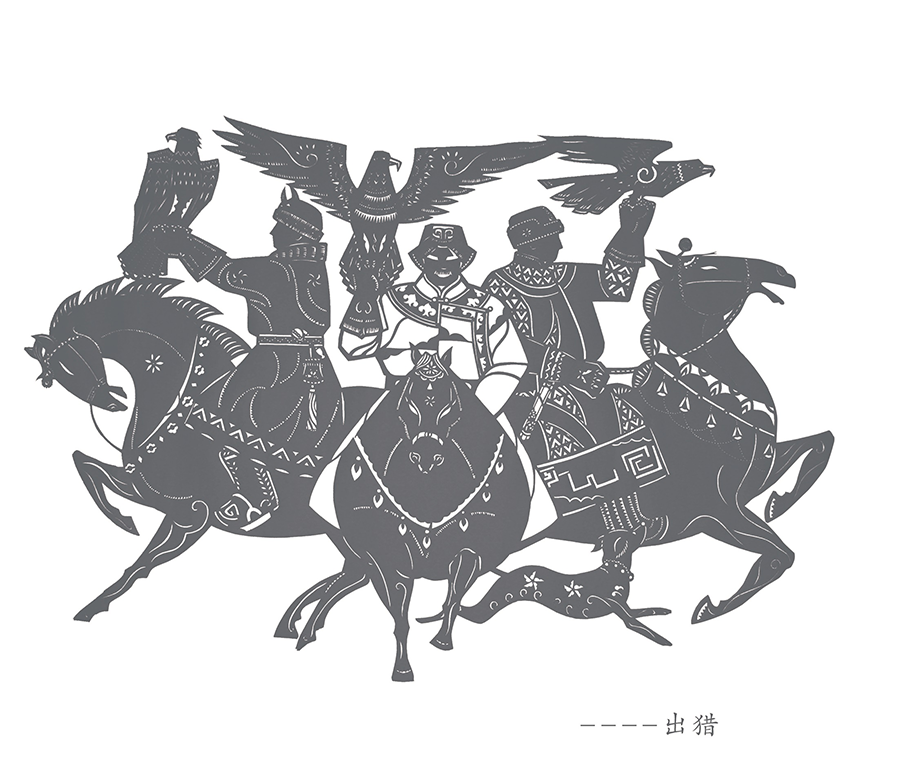Themed paper cut work: the Tale and Hunting

Themed paper-cut work
In addition to Hanêka, Su has also expanded her repertoire with great originality to other forms of paper cutting to carry forward Daur customs. Her profound understanding of ethnic culture and earnest efforts on improving her skills gives her works a unique style.

This paper-cut work tells the legend of the origin of Khitan, the most credible and accepted ancestors of Daur. Once upon a time, there was a young man riding a white horse down the Laoha River and a young woman walking a black ox along the Xar Moron River. They met at the confluence of the two rivers and fell in love with each other then got married. Each one of their eight sons founded a tribe, thus forming the Khitan ethnic group.

The Daur boast a long history of hunting and have their own hunting culture. In the Qing Dynasty (1644-1911), they were famous for hunting ermines to pay tribute to the imperial court and do business with the Manchus, their neighbors. Otters, bears, wild boars, deers and roe deers were also their prey. Hounds, in particular, served as major hunting assistants as they could help locate targets even under water. Hawks could be trained to be good chasers, thus the Daur developed a falconry.
Similar to lumbering, it is necessary to have teams when hunting at a distance which lasts for several months. Daur hunting groups were usually made up of three to than ten or more people called an aanag or tatan (team going into deep mountains). The departure time should fall on an auspicious day and an embarking ceremony was essential. In the ceremony, the hunters, all their families and neighbors had a big feast.
During their trip, each member was asked to strictly follow orders and fulfill their duties: the elder and more experienced members served as the leaders while the youngest one were cooks; quarrels, ominous words and independent actions were banned. They also used the roasted animal shoulder blades to divine their hunting, and equally distributed the prey.
Su makes a vivid presentation of a Daur traditional hunting scene via her scissors and gravers. Just as her work above, Hunting, shows, three hunters ride on the husky horses with eagles sitting on their hands, followed by an agile hound. It is likely that this scene happens in winter for the hunters’ robes and boots seem rather heavy and the hats are trimmed with fur. In ancient times, the scene depicted in the work must have happened constantly, developing the Daur’s fine horseback archery skills, providing them with food and clothes, and nurturing within them a tough character.




